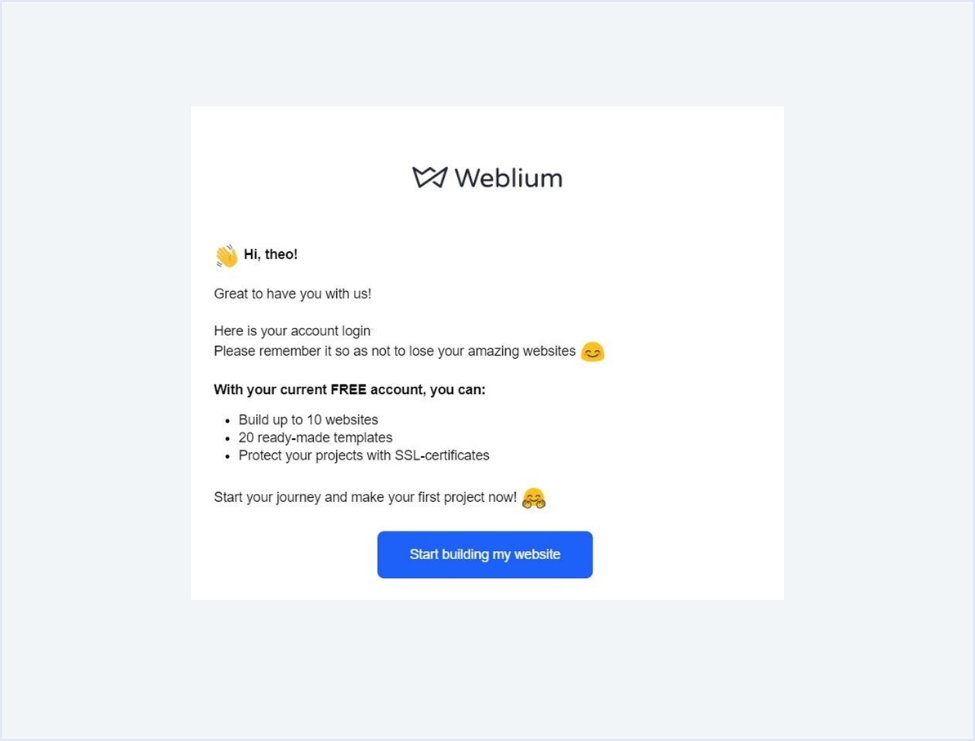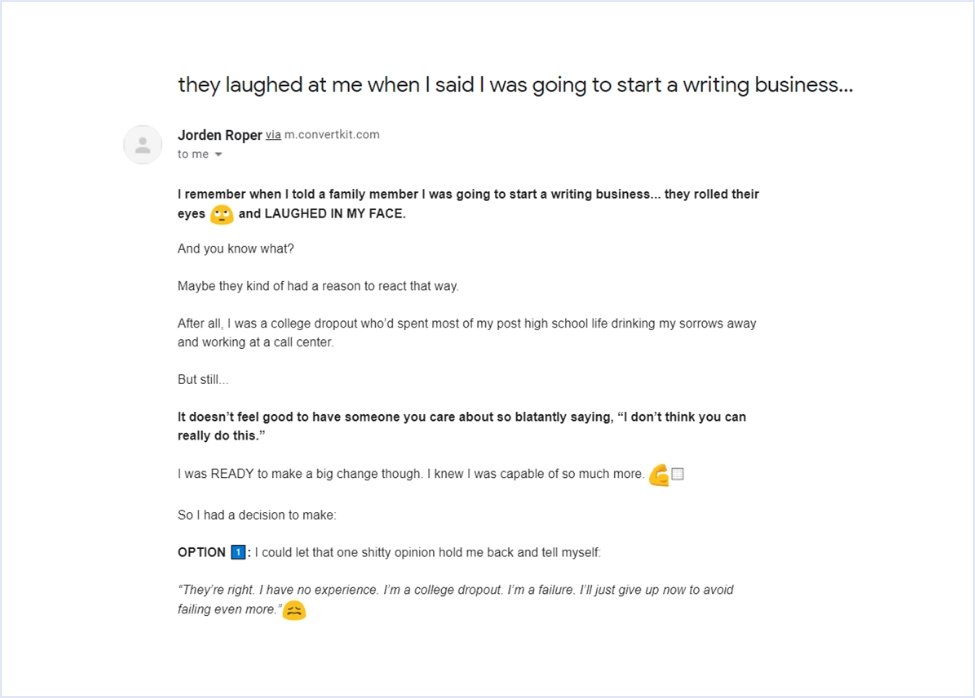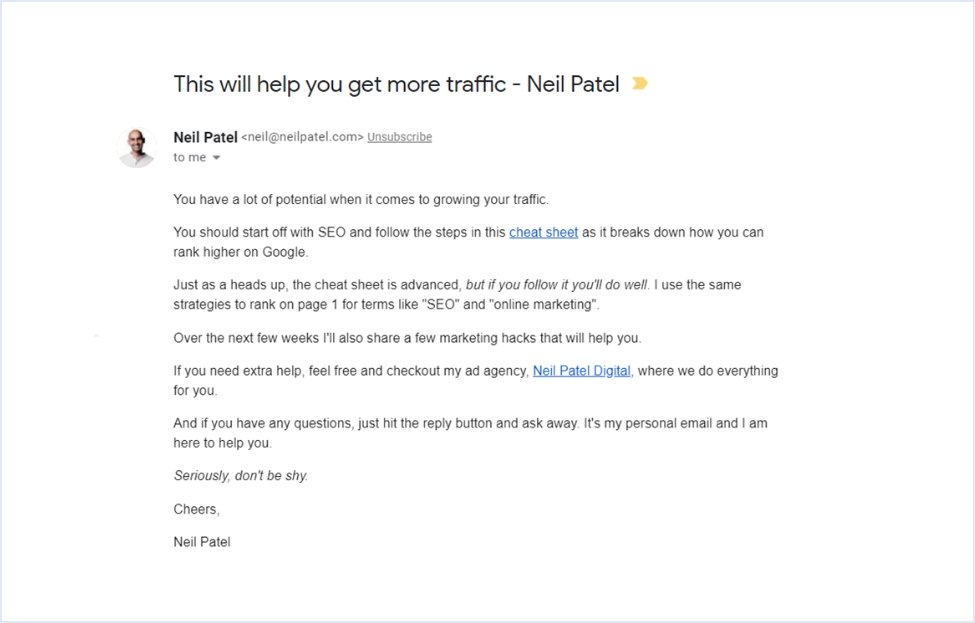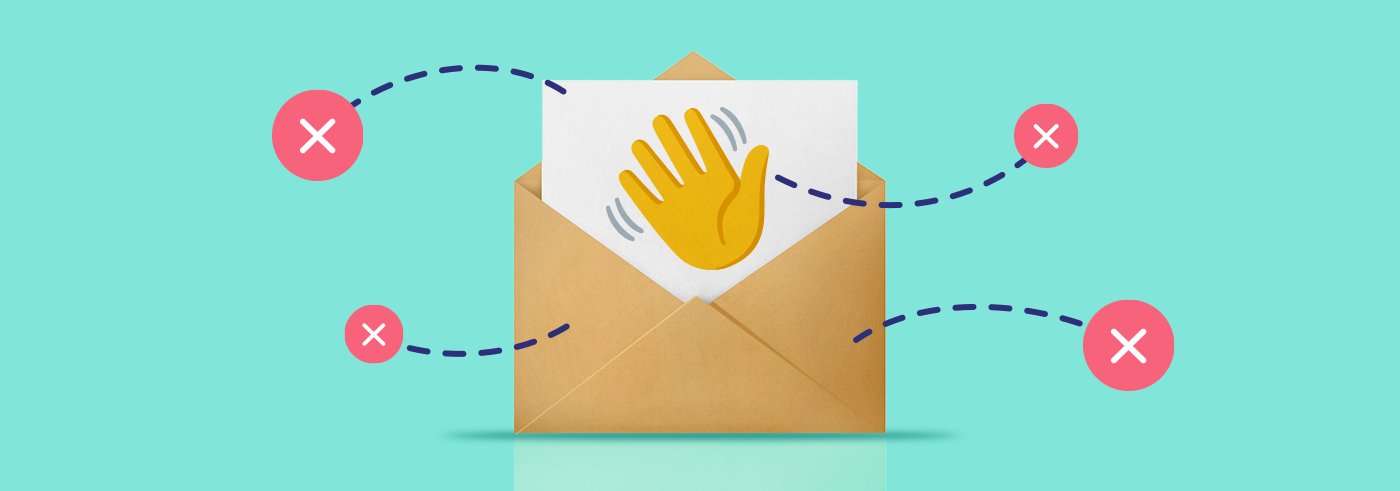First impressions matter, especially when it comes to new leads.
Your introduction really does matter. That’s true in email marketing as well. Welcome emails can make the difference between a conversion and a lost customer, so it’s important that you get it right. We will show you the characteristics of a single welcome email and a welcome sequence so you can make a lasting good impression on your customers.
Table of Contents
- What are welcome emails?
- Single Welcome Email
- Welcome Sequence
- Single Welcome Email vs Welcome Sequence - which should you choose?
- Proposals for the welcome sequence and the welcome e-mail
What are welcome emails?
Whenever someone signs up to be on your list, you (should) greet them with an initial email laying out what you can offer.

It's simple and it can provide amazing results. Welcome emails come at a time when a potential customer is showing an active interest in your business. It happens during a peak of attraction to what you can offer. That’s why welcome emails have a higher open and conversion rate - and it’s the reason you should pay more attention to it.
In principle, you’re looking to achieve a few things:
- Add value. If you gave a cheat sheet or template in exchange for a user’s email, don’t stop there. Make sure your welcome email features other free resources.
- Use a consistent tone. It doesn’t matter if you write like this:

Or like this:

Just make sure that your tone and style are both consistent from the get-go. This way, potential customers know if they can identify with your business, which will increase engagement from the right audience.
- Outline your USPs and benefits. Don’t be sales-y, but don’t shy away from showing your potential to possible customers.
- Reference your usual email marketing content. A welcome email (or emails) is a chance to pitch yourself, but it should also ease their way into your regular content. Make sure you set expectations about your publishing schedule and content efforts.
If you want more tips on how to power-up your email marketing, give this walkthrough a read. Now for the dilemma - which format is better to help you achieve these goals?
Single Welcome Email
A single welcome email is pretty intuitive - it’s just one message of you saying hello.
Benefits
- Less spammy than a sequence
- You don’t run the risk of your messages being filtered
Drawbacks
- Your email may be lost in the crowd
- Less space to make a good first impression
Single welcome emails are better than a sequence in a few scenarios:
- You target busy people. Yes, we’re all busy, but if your target audience usually has a decision-making position, is a business owner or has a “lack of time” as an identifier, a single welcome email might increase retention.
- You’re just starting out. What you should avoid most in welcome emails is fluff - aim to add real value and delight your audience. If you’re just starting your business, chances are you can’t justify three emails because you can’t link back to that many podcasts, blog posts or products.
- Your niche can be perceived as spammy. As sad as that may be, self-help, personal development, and the business niches are sometimes seen as spammy. Go for a single welcome email and you might come across as more down to earth than your competitors.
A proper analysis of your audience, position in the market and USPs will reveal more reasons to go either way. If you’re sure this is the way to go, don’t just start writing.
First of all, keep it short and sweet. If you go over 200 words, there’s a big chance people will open your email, but don’t go all the way through. Do your best to add value and get the most important information across. Second, forget templates. You can browse through them to get inspired, but you’ve got one shot at making a good first impression. Trust me, nothing sells better than authenticity.
Welcome Sequence

Welcome Sequences are like an email marketing campaign with the focus of introducing a new lead to your business. They can be spread over a few hours or a few days.
Benefits
- More room to outline your email
- Higher chance for your leads to notice the message
- Possibility for a reader to get inspired by a message that struck the right chord
Drawbacks
- Your emails may appear as spammy
- Emails may get filtered under “Promotions” or “Spam” folders and never be seen by a lead.
Welcome Sequences can help in some cases:
- You sell high-value products. This usually requires a lot of lead nurturing, so trying out several messages should be your default from the get-go.
- You serve different market segments. If you’re selling a podcasting course, a YouTube marketing course and a book on digital media - all of them with their own content and lead magnets, sequence emails could help. Consider sending topical welcome emails, each exploring a different service you offer.
Consider the following:
First of all, only send several welcome emails when you know for sure that you have valuable information to provide for each of them. You’re making first impressions, so you don’t want to waste your audience’s time. Second, spread them out. It’s up to you to decide the timetable, but a day or two in between the emails should help increase retention. Third, consider going in-depth about something. Don't get scared to expand on the subject and send a follow-up email with more details.
Single Welcome Email vs Welcome Sequence - which should you choose?
There’s no universal answer, but you should consider the following when making a choice:
Your audience. Making educated guesses about your audience’s behavior can shed some light on the issue. If their inbox is always cluttered or if lack of time is among their common traits, a single welcome email might increase retention. If they’re not natural online shoppers or if they require extensive research before buying, a welcome sequence might work better.
Those aren’t exhaustive criteria. Formulate your own buyer persona and try to determine better approach based on the ups and downs of each technique and your semi-fictional representation of an ideal customer.
Your product. If you’re selling high-value products, you need to do some convincing before closing. Different angles and USPs work for different people. A welcome sequence where you explore several benefits is bound to increase engagement. But, if you sell something with a low price tag to people with a lot of disposable income, a single welcome email could be better.
This goes deeper into how your brand and company is perceived. Consider drafting a SWOT analysis of your enterprise and then run that against each welcome email type.
Your market. If you serve a saturated market, a single welcome email might increase your standing with potential customers. If you do business in a field where it’s harder to come across amazing content, a welcome sequence packed with free valuable resources will increase your conversion rate.
Your content strategy. Consider how often you send an email to your list and how often you put out new content in general. Consistency is key so try to emulate your content strategy when welcoming new leads. If you publish a post, a podcast episode, and a Youtube video once a week, a welcome sequence that gets new leads up to speed on what you’re doing could increase retention. If you update your email list once every two weeks, you don’t want to fill up an inbox just to go silent for the next week and a half.
Proposals for the welcome sequence and the welcome e-mail
There’s no definite answer to how you should welcome new leads to your email list.
Depending on your audience, product, market, position in that market and content strategy, either might work. To answer the question, analyze your business and run that against the benefits and downsides of each strategy. After you ran the numbers and made a decision, remember to aim for adding value, maintaining a consistent tone and outlining your benefits.
Here’s a fun exercise - draft a list of your top 10 competitors and sign up for their email list. Imagine you’re a prospective customer and decide which format made you more likely to engage with their business.







